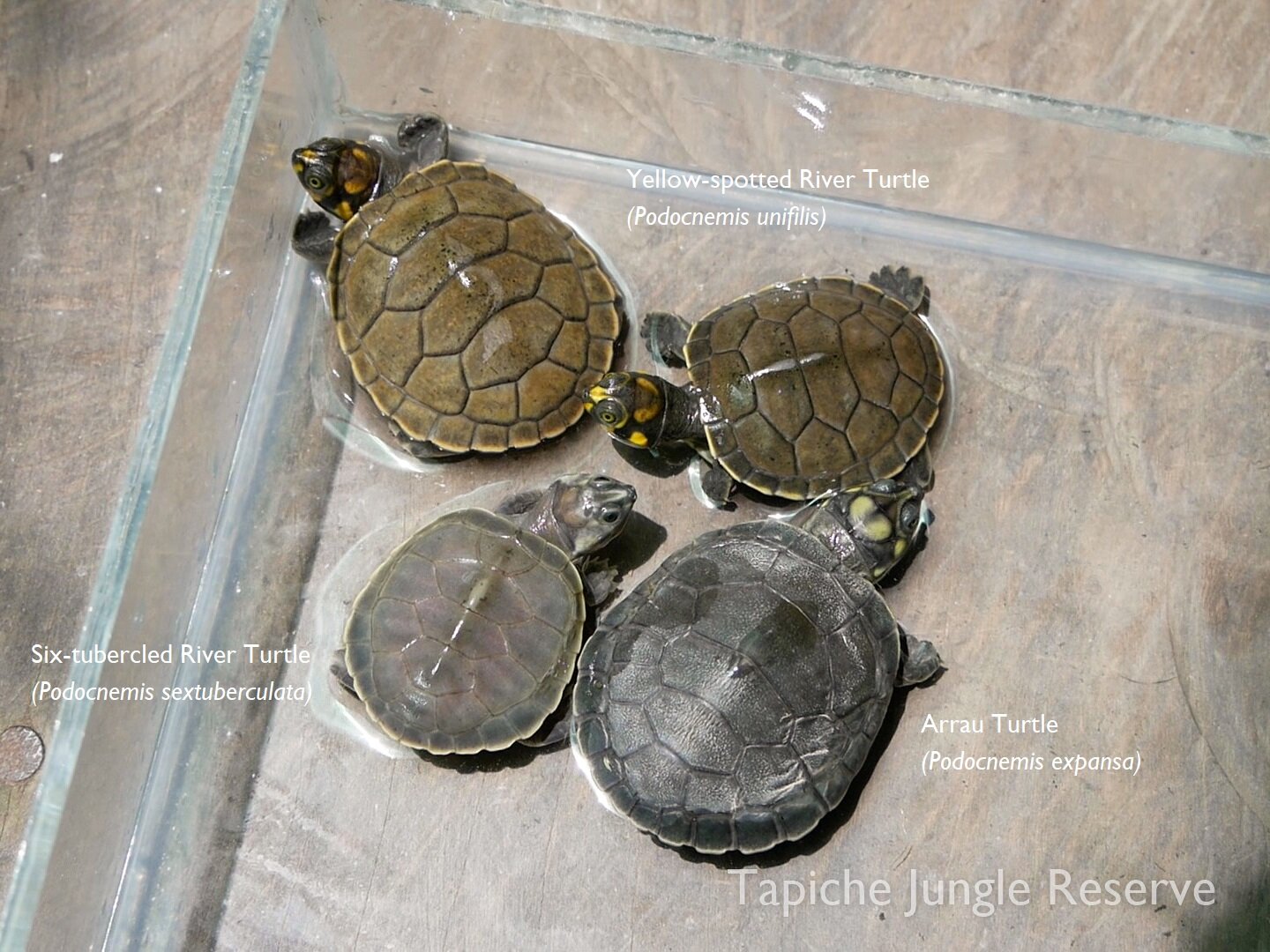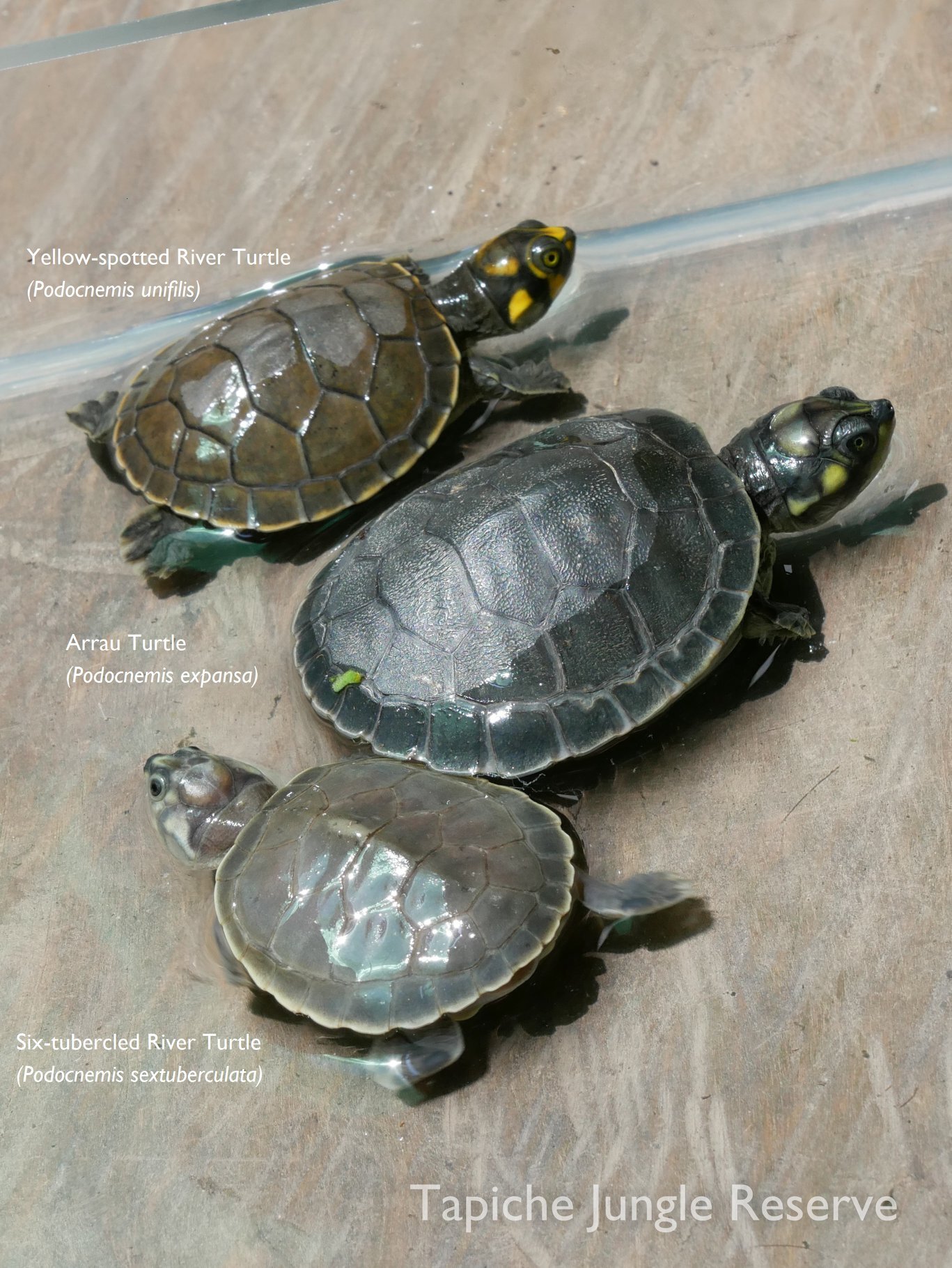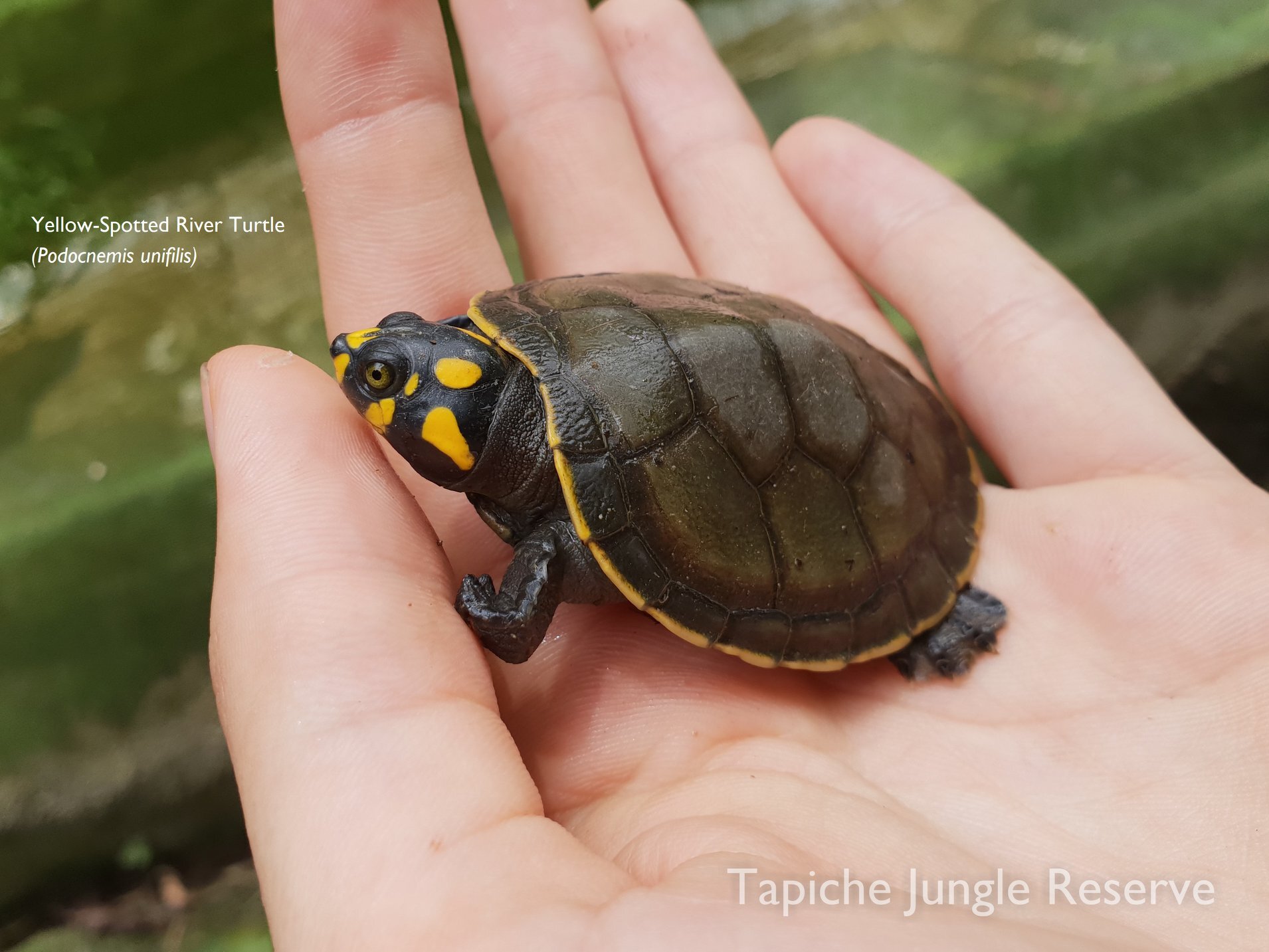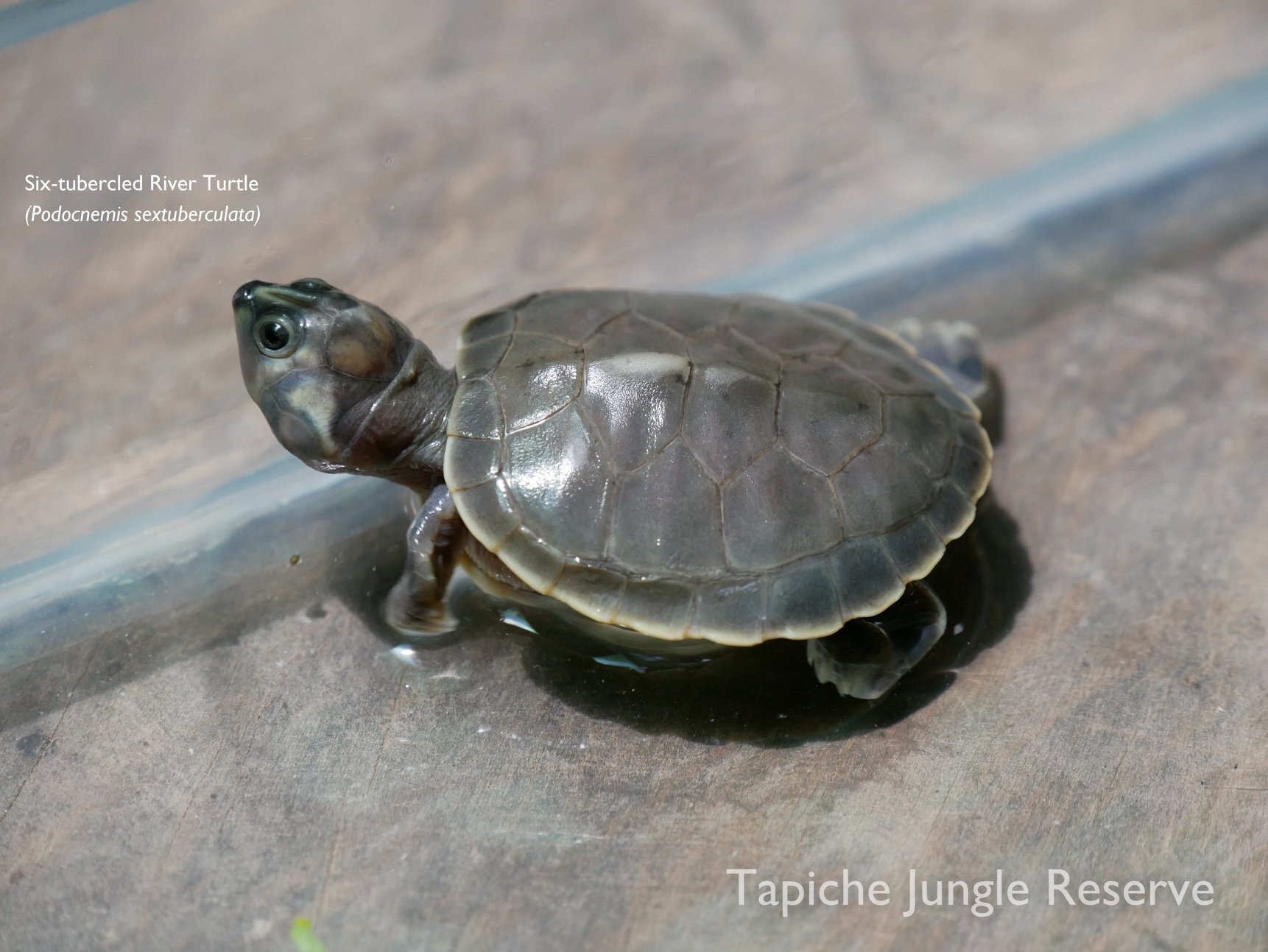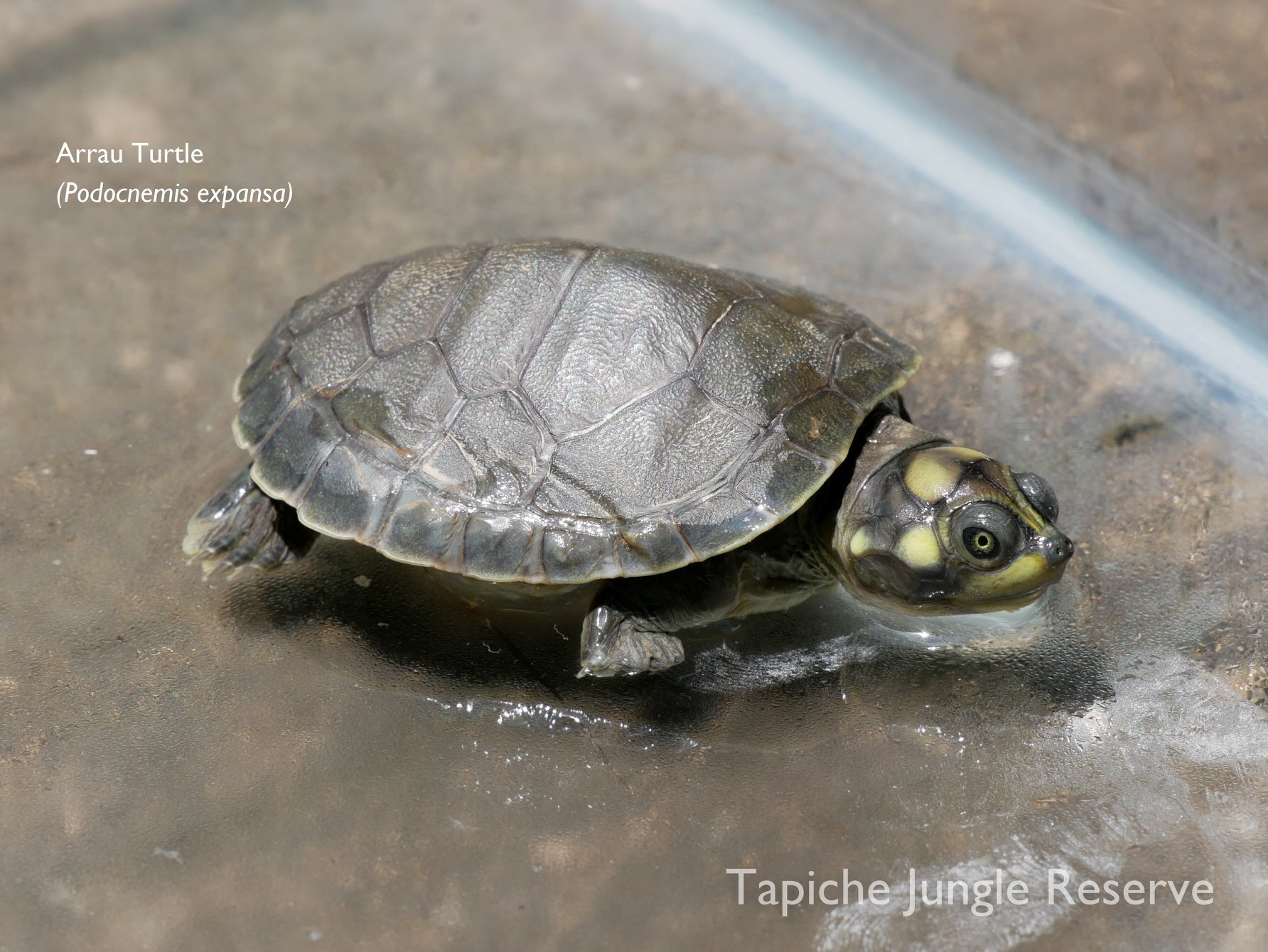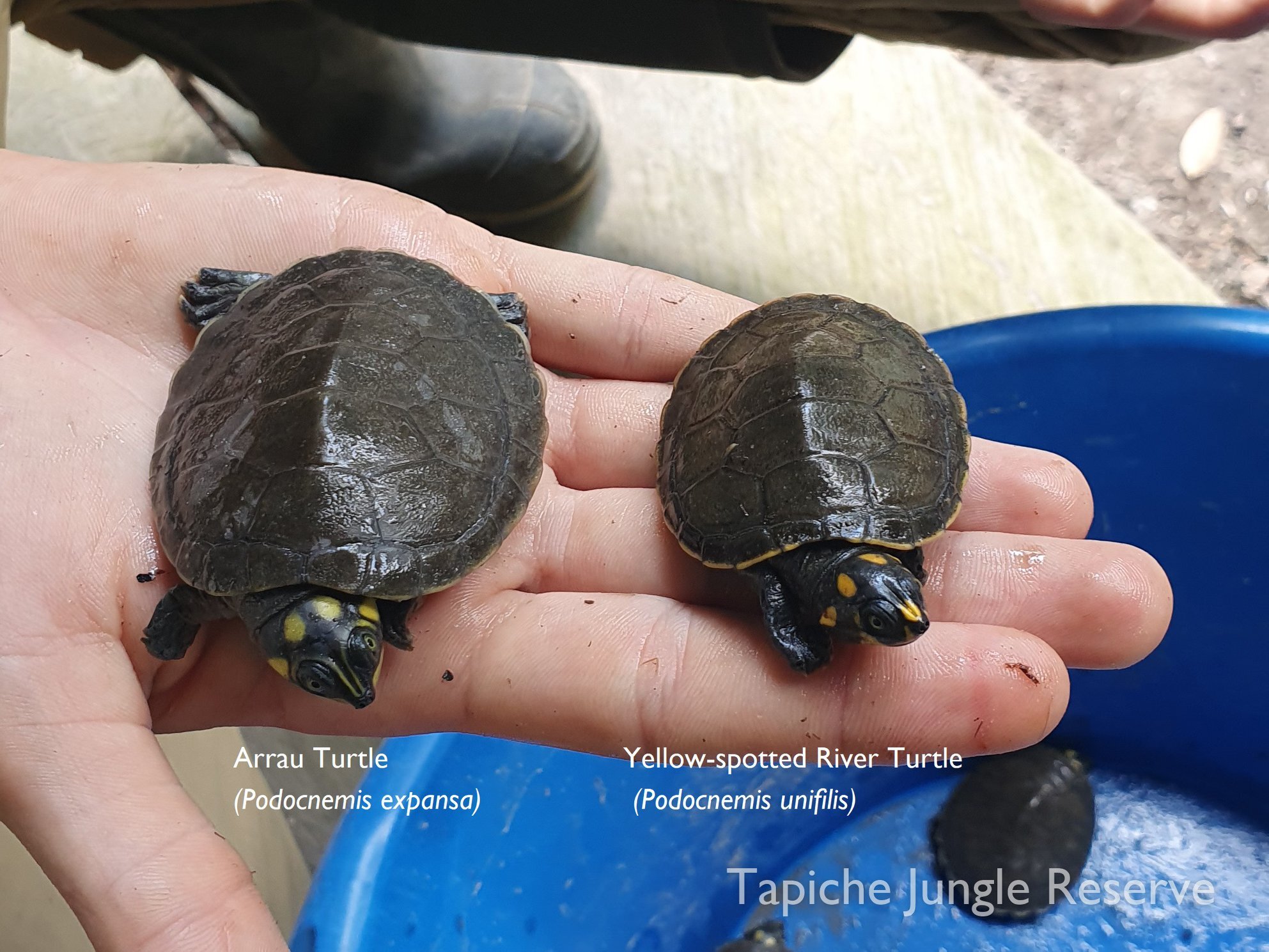Three Turtle Species: Can you see the difference?
After the sad news of the unfortunate ant attack on our turtle nesting boxes, we want to share a really positive and encouraging update on the turtle rescue season 2020. This past turtle rescue season we have been able to successfully save and liberate all three species of river turtles found at the Tapiche Jungle Reserve in the northern Amazon of Peru!
The three species of turtles at the reserve are the Yellow-spotted Amazon River Turtle (Podocnemis unifilis), the Six-tubercled Amazon River Turtle (Podocnemis sextuberculata) and the Arrau Turtle (Podocnemis expansa), also known as Giant Amazon River Turtle. Both the Yellow-spotted and the Six-tubercled Amazon River Turtles are classified as Vulnerable by the IUCN (International Union for the Conservation of Nature), meaning they face a high risk of extinction in the wild. The Arrau turtle, although not considered at risk by the IUCN, has been heavily poached in our region and has almost completely vanished locally. In 2019, for the very first time since establishing the reserve in 2010, we found 2 nests of the Arrau turtle, and during this past rescue season we found 4 nests!
The majority of the nests we find every year are from the Yellow-spotted Amazon River Turtle (Podocnemis unifilis). We find their nests on the sandy beaches that appear along the Tapiche river in low water season, as well as on the riverbanks in the muddy and more solid ground. The nests we found had between 30 and 50 eggs, the eggs being white oval in form. Hatchlings have very distinctive yellow spots on their faces which in the female turtles will vanish as they grow.
The Six-tubercled Amazon River Turtle (Podocnemis sextuberculata) lays their nest later in the season, when the water is at the lowest level. That is when some flatter beaches come out of the water, and that is where we mostly find the nests of the Six-tubercled River Turtle. Last year during the nesting season, the water did not go all the way down to its lowest level. Due to this, three of the flat beaches that the Six-tubercled River Turtles preferred in past years did not appear in 2020. This might be a possible explanation as to why we found less nests of this turtle species than in past years; we only found 5 of these nests in 2020. Their nests are smaller with only 12 to 22 eggs and their eggs are more delicate than the Yellow-spotted River Turtle eggs. The egg shells feel softer and the slightest pressure on the egg would destroy them. Retrieving these nests and transporting them to the lodge takes an extra amount of caution and attention.
The Six-tubercled River Turtle hatchlings are smaller than the Yellow-spotted River Turtles and have a light grey colour. They can also be distinguished by the six ridges on their plastron (the underside of their shells). When these turtles hatch, their shells - just like the eggs - are softer than those of the other species, which is why they are among the hatchlings that are released last.
The Arrau turtle (Podocnemis expansa) is the biggest turtle in the reserve, growing to be a meter long as an adult, and they lay huge nests. The four nests we found in 2020 contained between 124 and 140 eggs that have a round shape and look like ping-pong balls. As mentioned earlier, the Arrau turtles are almost extinct from our region, and being able to witness a new generation of this species hatch and swim into liberty in the Tapiche Jungle Reserve has brought tears of joy to our eyes! The Arrau turtle hatchlings are bigger than the other two species of turtles; while they also have yellow spots on their faces, the colour is not as saturated as in the Yellow-spotted River Turtles. The Arrau turtle hatchlings liked to stay well hidden in our nursery, mostly staying on the ground and diggin themselves into the mud.
In the photos you can see the different physical traits of the three turtle species. For size reference: the first two comparison photos and the photos of the single Six-tubercled River Turtle and the Arrau Turtle are all taken in November 2020, when the hatchlings were about two months old. The last comparison photo and the photo of the Yellow-spotted River Turtle were taken in February 2021, after the body of the Yellow-spotted River Turtle turned a deeper black and the yellow spots appear more contoured.
We want to thank everybody for their support during last year's nesting season! We are overwhelmed by all the nice messages and encouraging words we got from you and are so proud to present to you these amazing results of our conservation efforts at the Tapiche Jungle Reserve!
You can still support the Tapiche Jungle Reserve via our GoFundMe campaign: https://gofund.me/472e0a00
Our GoFundMe campaign, originally meant to support us through the Turtle Rescue Season in 2020, has evolved into a fund helping to sustain the reserve and pay our local staff. We had hoped to be back earning tourism income by now, but unfortunately that's just not the case. Since we're still not sure when we'll have active income again, our campaign organizer Louisa has raised our fundraising goal to help us through at least another few months. Thank you so much to everyone for your support and your warm words!
